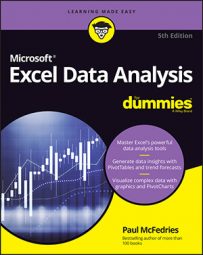To construct a comparison expression, you enter a comparison operator from the following table and then a value used in the comparison.
| Operator | Name | Example | What It Matches |
| = | Equals | = 100 | Cells that contain the value 100 |
| <> | Not equal to | <> 0 | Cells that contain a value other than 0 |
| > | Greater than | > 1000 | Cells that contain a value greater than 1,000 |
| >= | Greater than or equal to | >= 25 | Cells that contain a value that’s equal to or greater than 25 |
| < | Less than | < 0 | Cells that contain a negative value |
| <= | Less than or equal to | <= 927 | Cells that contain a value that’s equal to or less than 927 |

